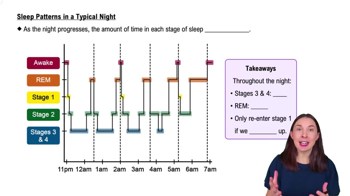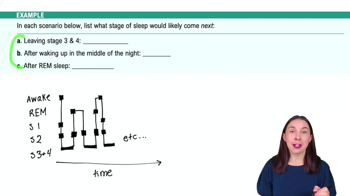Table of contents
- 1. Introduction to Psychology1h 43m
- 2. Psychology Research2h 20m
- 3. Biological Psychology2h 41m
- 4. Sensation and Perception28m
- 5. Consciousness and Sleep32m
- 6. Learning41m
- 7. Memory34m
- 8. Cognition37m
- 9. Emotion and Motivation35m
- 10. Developmental Psychology33m
- 11. Personality48m
- 12. Social Psychology41m
- 13. Stress and Health41m
- 14. Psychological Disorders44m
- 15. Treatment47m
5. Consciousness and Sleep
Sleep
Struggling with Psychology?
Join thousands of students who trust us to help them ace their exams!Watch the first videoMultiple Choice
The key to hypnosis seems to be
A
a heightened state of suggestibility.
B
avoiding subjects who are active and alert.
C
a gullible subject.
D
using more practical subjects, as opposed to daydreamers.
 Verified step by step guidance
Verified step by step guidance1
Understand the concept of hypnosis: Hypnosis is a trance-like state of focused attention and heightened suggestibility, often with deep relaxation.
Identify the key characteristic of hypnosis: The primary feature of hypnosis is a heightened state of suggestibility, where individuals are more open to suggestions and guidance.
Evaluate the options provided: Consider each option in the context of hypnosis. A heightened state of suggestibility aligns with the core concept of hypnosis.
Consider the role of suggestibility: In hypnosis, suggestibility is crucial as it allows the hypnotist to guide the subject's thoughts and behaviors more effectively.
Conclude with the correct understanding: Recognize that the key to hypnosis is not about the subject's gullibility or activity level, but rather their increased suggestibility.

 3:25m
3:25mWatch next
Master Circadian Rhythms with a bite sized video explanation from Hannah Gordils
Start learningRelated Videos
Related Practice


































































































![Race, Genes and IQ Differences | Bret Weinstein [Mini Clip]](https://img.youtube.com/vi/IztL_m3pd70/mqdefault.jpg)



































































































